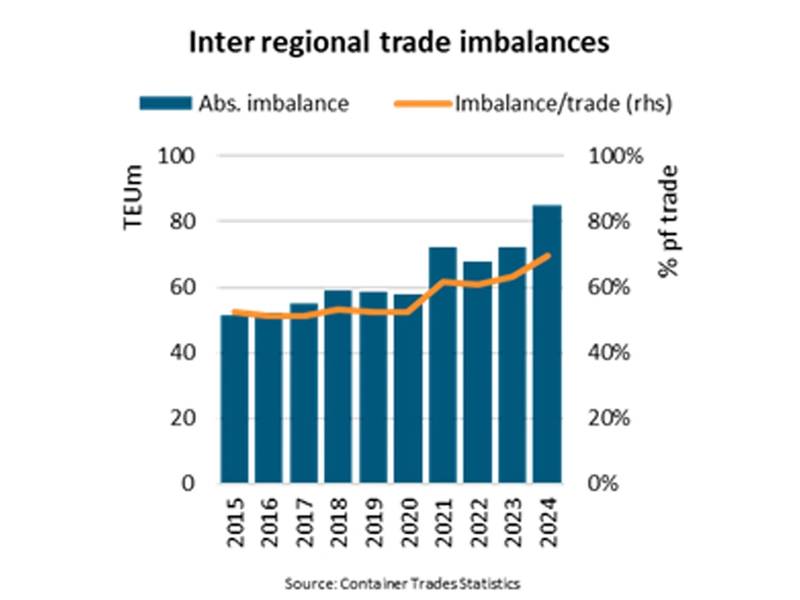Shipping Number of the Week: Regional Container Trade Imbalances Surge by 33%
“Since 2019, the global container market has grown 8%, ending at 183.2m TEU in 2024, according to Container Trade Statistics. However, growth has been very uneven, and regional imbalances between exports and imports have increased by 33%,” says Niels Rasmussen, Chief Shipping Analyst at BIMCO.
In 2019, regional imbalances totaled 58.8m TEU, equal to 52% of inter-regional trade, but grew to 84.9m TEU and 70% in 2024. In absolute terms, the imbalance in the East & Southeast Asia region remained the largest at 42.4m, up from 29.4m TEU in 2019. In other terms, the region exported 3 TEU for every TEU imported in 2024.

“The increase in trade imbalances has been driven by faster export growth from East & Southeast Asia compared with all other regions except Sub-Saharan Africa. In fact, exports from the Asian region have grown by 10.9m TEU, whereas the total inter-regional market has grown by only 9.5m TEU since 2019,” says Rasmussen.
In addition, East & Southeast Asian imports were 9% lower in 2024 than in 2019, contributing to a contraction in exports, especially from Europe & Mediterranean and North America.
Historically, the relative imbalance has been the largest in the Sub-Saharan Africa region. In 2024, however, the imbalance in North America was the largest. North America imported 2.5 TEU for every TEU exported. In Sub-Saharan Africa, imports were 2.3 times larger than exports.
The relative imbalance also grew in the Europe & Mediterranean and South & Central America regions but reduced in Oceania, Sub-Saharan Africa and Indian Subcontinent & Middle East regions.
Overall, inter-regional trade balances remained within a 48-53% band between 2012 and 2020. It started climbing in 2021 as exports from East & Southeast Asia grew 11%. In 2024, those regions’ exports ended 21% higher than in 2019, whereas the total inter-regional market grew only 8% in the same period.
“Imbalances within regions, and specific imbalances for specific container sizes and types, dictate liner operators’ cost for positioning empty containers. However, the increasing regional imbalances point to a larger and potentially more costly problem. To accommodate growing head-haul trades, liner operators must deploy ever more and/or larger ships only to see relatively smaller revenue potential in the back-haul trades,” says Rasmussen
Related News

